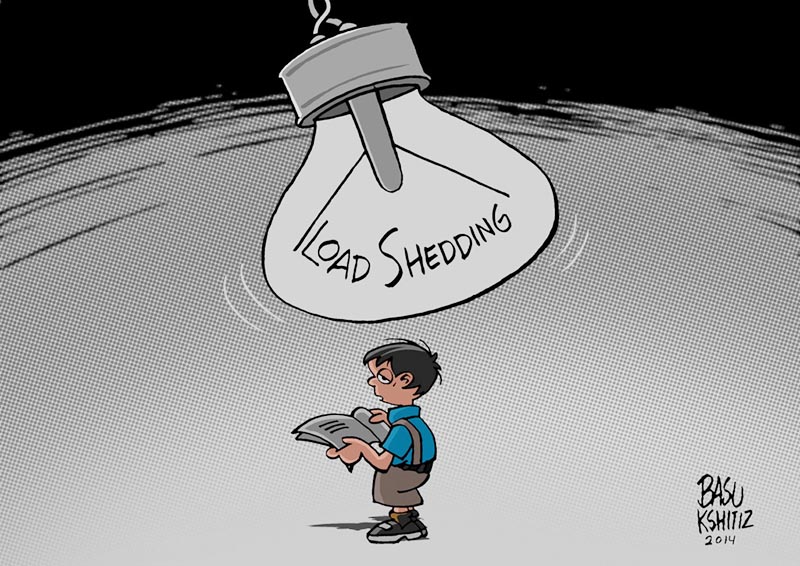Load-shedding cost GDP $11 bn from 2008 to 2016
Kathmandu, June 8
Nepal Electricity Authority may have finally declared that the country has become load-shedding free from May 14, but a World Bank study has revealed that between 2008 and 2016 the rolling blackouts cost Nepal’s GDP $11 billion.
NEA started enforcing power cuts from 2008 when the country’s demand for electricity surpassed the total supply. The problem peaked in 2016 with up to 14 hours of load-shedding in the dry season.
The study titled ‘How much has Nepal lost in the last decade due to load-shedding?’ has analysed the impact of load-shedding from 2008 to 2016. While the amount of GDP loss is almost equal to Nepal’s economy in 2008, if expressed in 2016 price using the corresponding GDP deflator values, the total GDP loss over the nine years amounts to a staggering $14.5 billion, according to the authors of the report.
The report states that the country lost more than six per cent of its GDP annually, on an average, during the review period. This means that if there had been no load-shedding, Nepal’s annual GDP would have been almost seven per cent higher as compared to what it was during the 2008 to 2016 period. Nepal was unable to meet, on an average, 20 per cent of its total electricity demand each year during the review period.
The drop in output could be witnessed across the board, as per the report. This was caused either by lack of power supply, especially for small- and medium-sized industries that could not afford backup power; or increased electricity costs, especially for large industries that could afford expensive backup generation.
The most notable impact was on investment, which was highly depressed due to lack of reliable electricity supply. For example, if there had been no load-shedding, annual investment, on an average, would have been 48 per cent higher than it was, says the study.
Due to the lower investment and production loss caused by load-shedding, total industrial output dropped by 6.9 per cent.
The study adds that load-shedding had also affected Nepal’s international trade during the 2008 to 2016 period, causing 2.8 per cent reduction of exports and 5.4 per cent reduction of imports.
This is because load-shedding causes the domestic production of goods and services to be more expensive, and makes the country’s exports less competitive. Also, since load-shedding causes production activities to decline, input needed for production also declines.
One of the limitations of the study was that researchers could not encompass representing captive power, such as backup electricity, in an industry as it was not possible to extract that data from the existing data reporting system. Similarly, the study has not captured the effect of investment households had made in their backup systems, such as inverters, storage devices powered lighting devices. The implication of this limitation is that estimated impacts presented in the current analysis are higher than what it would be when impacts of backup power supply systems in both production sectors and households are accounted for, as per the report.






